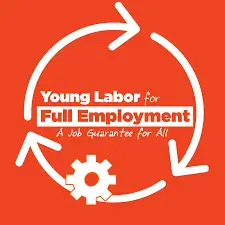Description
Explore the shift from secure employment to job insecurity under neoliberal policies in Australia and discover strategies for a fairer future.
Introduction: The Evolution of Employment in Australia
Neoliberalism in Australia, since the mid-20th century, Australia has seen significant shifts in its employment landscape. Transitioning from an era where full-time, secure jobs were the norm—when training and apprenticeships were readily provided by the government—to a modern context marked by job insecurity and inequality, driven by neoliberal ideologies. This article delves into the rise of neoliberalism in Australia, examines its impact on society, and explores strategies to return to a fairer employment system.
The Rise of Neoliberalism in Australian Politics
Neoliberalism’s Entry into the Mainstream

Neoliberalism, advocating for the constructive interaction between governments and markets, gained traction in Australian politics in the 1980s. During this time, the Hawke-Keating government started key reforms that embraced neoliberal principles, such as shifting from a universal pension system to a market-oriented private savings scheme. These changes marked the beginning of a shift towards a more market-driven approach in social and economic policies.
Continued Influence Under Successive Governments
The neoliberal agenda was further entrenched under John Howard, a member of the Mont Pelerin Society, an organization often regarded as the cradle of neoliberal thought. His government’s policies further promoted market solutions to social problems, which significantly reshaped Australia’s welfare landscape and employment conditions, leading to increased job precarity and reduced social expenditure.
Deregulation and Privatization
Under Howard’s administration, significant strides were made in deregulating various sectors of the economy and privatizing formerly state-owned enterprises. This included major national assets such as telecommunications, which saw the privatization of Telstra, the national telecom service provider. Such moves were intended to increase efficiency and stimulate competition but often led to job cuts, reduced service quality in some regions, and increased prices, affecting the accessibility of essential services for ordinary Australians.
Labor Market Reforms
Another cornerstone of Howard’s neoliberal influence was labor market reform, particularly through the introduction of the Workplace Relations Amendment Act 1996, commonly known as the WorkChoices legislation. This law significantly altered the power dynamics between employers and employees, tilting the balance in favor of employers. It reduced the strength of collective bargaining and made it easier for employers to modify or terminate employment conditions, contributing to an increase in casual and contract employment.
Tax Reforms and Economic Management

Taxation reform was also a significant focus during the Howard years, with the introduction of the Goods and Services Tax (GST) in 2000. This consumption tax was designed to streamline the tax system and boost economic efficiency. However, it also shifted the tax burden in ways that disproportionately affected lower-income individuals and families, who spent a larger portion of their income on taxed goods and services.
Social Policy and Welfare Restructuring
In social policy, Howard’s government pushed for a model that emphasized individual responsibility over collective welfare. This was evident in reforms to the welfare system, which introduced stricter conditions for receiving unemployment and disability benefits, among others. These changes were aimed at reducing government spending on social services and encouraging recipients to enter the workforce, but they also led to increased hardship for vulnerable populations.
The neoliberal policies adopted under John Howard’s leadership left a lasting impact on Australia’s social and economic landscape. They reshaped the relationship between the government and its citizens, altering expectations about employment, social mobility, and the role of the public sector. While these policies were promoted as necessary for economic growth and global competitiveness, they also contributed to widening inequality and reducing the overall job security for ordinary Australians.
The continued influence of neoliberalism under successive governments highlights the need for a critical reassessment of its long-term effects on Australian society. By understanding these impacts, Australians can better discuss and develop policies that aim to restore balance to the economy and ensure a fairer distribution of wealth and opportunities.
The Impact of Neoliberalism on Australian Society
Erosion of the Welfare State
The implementation of neoliberal policies has led to a significant retrenchment of the welfare state in Australia. The shift towards market-driven solutions has seen the introduction of conditional welfare systems, where eligibility for benefits is tied to specific behavioural and attitudinal criteria. This move has resulted in a reduced safety net for the unemployed and underemployed, worsening issues like poverty and homelessness.
Rising Inequality and Job Insecurity
Neoliberalism has also contributed to rising inequality and job insecurity. Many Australians, especially the youth, now face the prospect of part-time or casual employment without job security or adequate working conditions. This contrasts sharply with the mid-20th century, when individuals leaving school, such as myself at the age of fifteen, could readily find full-time employment with sufficient training and stable career prospects.
A Trip to the Museum of Neoliberalism
Strategies for a Fair Society
Promoting Full-Time Employment

To mitigate the effects of neoliberalism in Australia, there is a critical need for policies that promote full-time employment. This includes government investment in sectors that offer stable jobs and incentivizing businesses to create more permanent positions rather than relying on casual or contract work.
Legislation for Fair Wages and Working Conditions
The government should also legislate minimum wages and working conditions that reflect the economic realities of today. These laws would help ensure that all workers, regardless of their employment status, can support a decent standard of living in an increasingly costly Australia.
Balancing Workplace Bargaining Power
Adjusting policies to balance bargaining power within the workplace is essential. This can be achieved by strengthening labor unions and implementing fair negotiation practices, ensuring that workers can advocate effectively for their rights and benefits.
Creating a Dignified Social Safety Net
Establishing a means-tested, community-based social safety net is crucial. This system should be designed to offer support without stigmatization, giving a dignified way for individuals to manage short-term financial difficulties and job transitions.
Combating Discrimination and Building Inclusivity
Finally, addressing discrimination and fostering inclusivity are vital for building a fair and respectful society. Strategies must be developed to end all forms of workplace discrimination and promote a culture of tolerance and respect among the diverse Australian population.
Conclusion: Towards a More Equitable Future
The journey from an inclusive employment model in the mid-20th century to the current neoliberal-dominated landscape illustrates the need for a significant policy shift to ensure fairness and security in the job market. By implementing the strategies outlined, Australia can move towards a fairer society where every citizen, regardless of their background or education level, can thrive.
Engage in the Discussion
- How can Australia better support its workforce in a post-neoliberal era?
- What role should the government play in ensuring job security for future generations?
Call to Action
Reflect on the changes in the employment landscape from the past to the present and share your thoughts on how Australia can rebuild a fairer employment system. Join the conversation to help shape a fairer future.
References:
How neoliberalism became an insult in Australian politics: https://www.sydney.edu.au/news-opinion/news/2022/08/11/how-neoliberalism-became-an-insult-in-australian-politics.html
Ideology before evidence: How neoliberals have responded to recent Australian welfare reform measures: https://lens.monash.edu/@politics-society/2023/07/03/1385913/ideology-before-evidence-how-neoliberals-have-responded-to-recent-australian-welfare-reform-measures
Equality of Opportunity in Australia Myth and Reality: https://australiainstitute.org.au/wp-content/uploads/2020/12/DP85_8.pdf
Strategies to address discrimination to build a more inclusive country: https://humanrights.gov.au/about/news/speeches/strategies-address-discrimination-build-more-inclusive-country
How the Myths of “Progressive Neoliberalism” Hollowed Out Australia’s Left: https://jacobin.com/2021/05/australian-labor-party-alp-left-neoliberalism
Neoliberalism and Changing Regional Policy in Australia: https://espace.curtin.edu.au/bitstream/handle/20.500.11937/34039/19425_downloaded_stream_517.pdf?sequence=2
Social Cohesion Insights 06: Inequality and the ‘Fair Go’ in Australia: https://scanloninstitute.org.au/news/social-cohesion-insights-06-inequality-and-fair-go-australia
Inequality and the ‘fair go’ in Australia: https://scanloninstitute.org.au/sites/default/files/2023-02/Social%20Cohesion%20Insights_06_Fairgo.pdf

